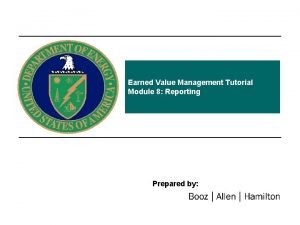Notes Points Name Period Points Earned Chapter 30


































































- Slides: 66

Notes Points Name _________________ Period _______ Points Earned Chapter 30 Notes Highlight Key Words/Phrases Points Possible 2 Copy Notes: pictures + color + label 20 Questions: 20 questions + arrows 10 Summary: 3 paragraph(s) 15 Drawings: 3 drawing(s) 6 TOTAL J. Nguyen – Physical Science 53

Chapter 30 Standards 1 d. Students know the evidence indicating that the planets are much closer to Earth than the stars are. 2 a. Students know why the solar system is located in an outer edge of the disc-shaped Milky Way galaxy, which spans 100, 000 light years. 2 b. Students know galaxies are made of billions of stars and comprise most of the visible mass of the universe. 2 c. Students know the evidence indicating that all elements with an atomic number greater than that of lithium have been formed by nuclear fusion in stars. 2 d. Students know that stars differ in their life cycles and that visual, radio, and X-ray telescopes may be used to collect data that reveal those differences. 2 g. *Students know how the red-shift from distant galaxies and the cosmic background radiation provide evidence for the “big bang” model that suggests that the universe has been expanding for 10 to 20 billion years. J. Nguyen – Physical Science

CHAPTER 30 – STARS, GALAXIES AND THE UNIVERSE

I. 30. 1 – CHARACTERISTICS OF STARS

A. What are Stars? 1. A star is a ball of gases that gives off a tremendous amount of electromagnetic energy. 2. The energy comes from nuclear fusion occurring inside the star’s core. 3. The sun is a star. J. Nguyen – Physical Science

B. Composition of Stars 1. Stars are composed of the same elements that are found on Earth. 2. Unlike Earth, hydrogen is the most common element and helium is the second most common found in stars. 3. Carbon, oxygen, nitrogen, and calcium make up the remaining mass of stars. J. Nguyen – Physical Science

C. Temperature of Stars 1. Stars vary in temperature with most ranging from 2, 800 o. C to 24, 000 o. C. 2. The temperature of a star determines its color. 3. Scientists can use both the color and temperature to classify a star. J. Nguyen – Physical Science

D. Sizes and Masses of Stars 1. Stars vary in size and mass. 2. Some dwarf stars are about the same size as Earth. 3. Medium-sized stars are the size of our sun. 4. Some giant stars have diameters that are 1, 000 times the sun’s diameter. 5. Stars may have the same, more or less mass than the sun. J. Nguyen – Physical Science

E. Stars have two kinds of motions. 1. Apparent motion is the motion visible to the unaided eye in the dark sky. a. This apparent motion is due to the movement of Earth. b. If a picture is taken of stars moving over the course of a night, they look like they are moving counter-clockwise around a central star called Polaris, or the North Star. J. Nguyen – Physical Science

2. Actual motion is the motion of stars measured with high-powered telescopes and other instruments. There are three actual motions: a. They rotate on an axis. b. They may revolve around another star. c. They move away from or toward the Earth. i. Doppler effect is the shift in the wavelength of light. ii. Blue shift is the result of a star moving towards Earth. iii. Red shift is the result of a star moving away from Earth. J. Nguyen – Physical Science

J. Nguyen – Physical Science

F. Movement of stars during the year. 1. As Earth orbits the sun, different stars become visible during different seasons. 2. Polaris is our North Star. 3. Polaris is located directly above the North Pole and does not appear to move. 4. Some stars are always visible in the night sky, these stars always circle Polaris. 5. They are called circumpolar stars. a. Example: The Little Dipper J. Nguyen – Physical Science

J. Nguyen – Physical Science

G. Distances to Stars 1. Because outer space is so BIG, distances between the stars and the earth are measured in light-years. 2. Light-year is the distance that light travels in one year. 3. The speed of light is 300, 000 km/s and travels about 9. 5 trillion km in one year. 4. Light from the sun takes about 8 minutes to reach the Earth, so the sun is 8 light-minutes from Earth. 5. The further away a star is, the greater the number of light years. J. Nguyen – Physical Science

H. Two scales are used to describe the brightness of stars. 1. Apparent magnitude is the brightness of a star as it appears from Earth. a. Astronomers use special instruments attached to the end of telescopes to measure apparent magnitude. b. After they are observed, the stars are assigned a number. The lower the number on the scale, the brighter the star. 2. Absolute magnitude is how bright a star would appear if they were all the same distance from Earth. a. The lower the absolute magnitude number, the brighter the star. J. Nguyen – Physical Science

Ø Write 5 questions for this section. Ø Highlight key words and phrases. Ø Draw a picture. J. Nguyen – Physical Science

Summary (one paragraph) – Page 2 A star is ________________. The two most common elements found in stars are _____ and _____. Stars have two kinds of motions: ______ and ____. Light-year is __________. The two scales used to describe the brightness of stars are ______ and ______. J. Nguyen – Physical Science

II. 30. 2 – STELLAR EVOLUTION

A. Classification of Stars 1. Scientists have developed theories about the evolution of stars by studying stars in different stages of development. 2. Astronomers use the absolute magnitude of stars and their luminosity (the total amount of energy they give off each second) to plot them on a graph. 3. The graph that results from this information is called the Hertzsprung-Russell diagram or the HR diagram. J. Nguyen – Physical Science

B. The H-R Diagram 1. Scientists use the H-R Diagram to describe the life cycles of stars. 2. Hottest temperatures are always plotted on the left of graph and the highest luminosities are always at the top. 3. The temperature and luminosity of most stars falls within a band that runs diagonally through the middle of the H-R diagram. 4. This band is known as the main sequence. Stars within this band are known as main sequence stars. Our sun is a main sequence star. J. Nguyen – Physical Science

J. Nguyen – Physical Science

C. The Life of Stars 1. The H-R diagram shows that the life of a star is a sequence of events called stellar evolution. 2. Stellar evolution includes the changes in the life of a star from life to death. 3. Stars go through the following stages in their lifetime: a. Nebula (Protostar) b. Main Sequence (Main Sequence Star) c. Leaving the Main Sequence (Red Giant or Red Supergiant) d. Final Stages of a Sunlike Star (Planetary Nebula and White Dwarf) e. Final Stages of Massive Stars (Supernova and Neutron Star) J. Nguyen – Physical Science

D. Nebula – First Stage 1. A star begins in a nebula. 2. Nebula is a cloud of gas and dust and most are composed of about 70% hydrogen, 28% helium, and 2% other elements. 3. A nebula is continually spinning. 4. As it spins, it gets smaller and denser. 5. Gravity and pressure take the materials of a nebula and pack it tighter and tighter. 6. A nebula can produce more than one star. J. Nguyen – Physical Science

7. The shrinking and spinning regions of a nebula flatten out into a disk of matter called a protostar. 8. As more and more matter falls into the protostar, pressure and temperature increase. 9. Temperature increases until about 10, 000°C and then hydrogen fusion begins. Hydrogen fusion is a type of nuclear fusion that changes hydrogen into helium. J. Nguyen – Physical Science

E. Main-Sequence – Second Stage 1. This is the second and longest stage of a star’s life. The stars in this stage are known as main-sequence stars. 2. Nuclear fusion continues. 3. Enormous amounts of energy released from nuclear fusion. 4. Gravity keeps the star a stable size. 5. The sun is a main-sequence star. J. Nguyen – Physical Science

F. Leaving the Main Sequence – Third Stage 1. A star enters its third stage when almost all of the hydrogen atoms within its core have fused into helium atoms. 2. Instead of the core making more helium, the core begins to convert helium into carbon. 3. Without hydrogen for fuel, the star’s core contracts under the force of its own gravity. The core shrinks! 4. As it shrinks, it gets hotter and has to transfer that heat elsewhere. 5. It transfers that heat into a shell that surrounds the core. 6. Can form two main types which depend on size – red giant stars and red supergiants. J. Nguyen – Physical Science

7. Red Giants a. Because of both hydrogen fusion and helium fusion, the outer shell of star expands or gets bigger. b. The third stage of stellar evolution involves a main sequence star becoming a red giant. c. They are known as red giants because their outer shells become red as they cool down. d. Red Giants are 10 times bigger than the sun. J. Nguyen – Physical Science 11/29/2020

8. Red Supergiants a. Main-sequence stars that are larger than the sun will become larger than giants in their third stage. Instead of becoming red giants, they become red supergiants. b. Red Supergiants are at least 100 times bigger than the sun. J. Nguyen – Physical Science

G. Final Stages of a Sunlike Star 1. Planetary Nebulas a. For medium to small sized main sequence stars, the next stage in its life is as a planetary nebula. b. Once all helium atoms have fused into carbon atoms, there is no energy left in the stars and their outer shell of gases drift away. c. As these gases drift away a cloud of gas forms around the core of the star which is known as a planetary nebula. J. Nguyen – Physical Science

2. White Dwarfs a. As the planetary nebula disappears, gravity causes the remaining matter in the star to collapse inward. The star continues to collapse inward until it cannot be pressed down any further. b. What is left is an extremely dense core of matter known as a white dwarf. c. A white dwarf is about the size of Earth and still shines for billions of years before it cools completely. d. As it cools, a white dwarf gets dimmer and dimmer. e. When a white dwarf no longer shines it is known as a black dwarf. J. Nguyen – Physical Science

H. Final Stages of Massive Stars 1. Novas and Supernovas a. Stars that are larger than our sun leave the red supergiant stage of their life and enter the nova/supernova stage. b. A nova is a large explosion of the star which is caused by the increase pressure of the star as it converts helium into carbon. c. A nova can cause a star to be many thousands of times brighter than normal. However, within a few days, the nova begins to fade to its normal brightness. d. Supernovas are thousands of times more violent than a nova. J. Nguyen – Physical Science

Nova/Supernova J. Nguyen – Physical Science

2. Neutron Star a. After massive stars explode in a nova or supernova, their core may contract into a very small and dense ball of neutrons. This is called a neutron star. b. Neutron stars still shine but not as brightly as they had originally. c. Due to their large size at this stage, neutron stars still shine more brightly than our sun. J. Nguyen – Physical Science

3. Black Holes a. Some massive stars produce leftovers that are too big to become neutron stars. b. The massive stars can contract under its greater gravity. c. Due to the great force of contraction, the core of the star crushes. This leaves a hole in space known as a black hole. d. The pull of gravity of a black hole is so great that nothing, not even light, can escape it. J. Nguyen – Physical Science

J. Nguyen – Physical Science

Nebula Protostar Low mass Main sequence star High Mass Main sequence star Red Giant Red Supergiant White Dwarf Nova Supernova Neutron Star J. Nguyen – Physical Science Black Hole

Ø Write 10 questions for this section. Ø You should have 15 questions so far. Ø Highlight key words and phrases. Ø Draw a picture. J. Nguyen – Physical Science

Summary (one paragraph) – Page 5 Astronomers use absolute magnitude and ______ to plot stars on a ______ diagram. Our sun is a _______ star. Stellar evolution is _____________. Stars go through four stages which are: 1. ________, 2. _______, 3. ________, and 4. _______. J. Nguyen – Physical Science

III. 30. 3 – STAR GROUPS

A. Constellations 1. Constellations are the patterns of stars and the region of space around them. 2. Although the stars that make up a pattern appear to be close together, they are not all the same distance from Earth. J. Nguyen – Physical Science

B. Patterns in the Sky 1. For more than 3, 000 years, people have observed and recorded the patterns of stars that they see in the sky. 2. Astronomers recognize 88 constellations. J. Nguyen – Physical Science

C. Multiple-Star Systems 1. Stars are not always solitary objects isolated in space. 2. When two or more stars are closely related, they form multiple-star systems. 3. Binary stars are pairs of stars that revolve around each other and are held together by gravity. J. Nguyen – Physical Science

D. Galaxies 1. Galaxy is a large-scale group of stars, gas, and dust that are bound together by gravity. 2. Galaxies are the major building blocks of the universe. 3. Galaxies contain billions of stars. 4. Astronomers estimate that the universe contains hundreds of billions of galaxies. J. Nguyen – Physical Science

E. There are three types of galaxies. 1. Spiral Galaxy a. Spiral galaxy is type of galaxy with a nucleus of bright stars and flattened arms that swirl around the nucleus. b. The spiral arms contain millions of young stars, gas, and dust. c. Some spiral galaxies have a bar of stars that runs through the center which is known as barred spiral galaxies. J. Nguyen – Physical Science 11/29/2020

2. Elliptical Galaxy a. Elliptical galaxy is a type of galaxy that varies in shape from nearly spherical to flattened disks. b. These galaxies are very bright in the center and do not have spiral arms. c. They do not have young stars and contain very little dust and gas. J. Nguyen – Physical Science

3. Irregular Galaxy a. Irregular galaxy is a galaxy that has no particular shape. b. These galaxies tend to be smaller and fainter. c. Stars are unevenly distributed throughout this galaxy. d. This galaxy is made of young and old stars. J. Nguyen – Physical Science

F. The Milky Way Galaxy 1. Our solar system belongs to the Milky Way Galaxy which is a spiral galaxy. 2. The galaxy has a diameter of about 100, 000 light years and rotates. 3. Milky Way is a cloudlike band of stars that stretches across the sky, has a milky appearance and is the disk of the galaxy. 4. The sun, which is located in one of the spiral arms, revolves around the galaxy at a speed of about 250 km/s and is one of a billion stars in this galaxy. J. Nguyen – Physical Science

J. Nguyen – Physical Science

IV. 30. 4 – THE BIG BANG THEORY

A. The Expanding Universe 1. Astronomers have been able to record data of the locations of galaxies over the years. They have found that our universe is expanding (getting bigger). J. Nguyen – Physical Science

B. The Big Bang Theory 1. There are several theories to explain why the universe is expanding but the most widely accepted theory is the big bang theory. 2. The big bang theory states that billions of years ago, all the matter and energy in the universe were compressed into an extremely small volume. Then about 14 billion of years ago, a sudden event sent all of the matter and energy outward in all directions. 3. As the universe expanded, some of the matter gathered into clumps that evolved into galaxies. 4. Today, the universe is still expanding, and the galaxies continue to move apart from one another. J. Nguyen – Physical Science

Ø Write 5 questions for this section. Ø You should have a total of 20 questions. Ø Highlight key words and phrases. Ø Draw a picture. J. Nguyen – Physical Science

Summary (one paragraph) – Page 6 Constellations are _____________. Binary stars are _____________. Galaxies are _______________. The three types of galaxies are __________, and _____. Our solar system belongs to the ______ Galaxy which is a _____ galaxy. J. Nguyen – Physical Science

Notes Points Name _________________ Period _______ Points Earned Chapter 30 Notes Highlight Key Words/Phrases Points Possible 2 Copy Notes: pictures + color + label 20 Questions: 20 questions + arrows 10 Summary: 3 paragraph(s) 15 Drawings: 3 drawing(s) 6 TOTAL J. Nguyen – Physical Science 53

Focus on Constellations J. Nguyen – Physical Science

Characteristics of Constellations There are 88 of them recognized Many of them are named after Greek Mythology Characters Each star in a constellation is labeled with a greek letter of the alphabet to let you know the order of brightness of the star Constellations were first developed to help in navigation and also to help farmers J. Nguyen – Physical Science

Greek Alphabet and the Constellations α- alphabrightest star in constellation β- beta- second brightest star γ- gamma- third brightest star δ- delta- fourth brightest star ε- epsilon- fifth brightest star ζ- etc. η θ ι κ J. Nguyen – Physical Science

ANDROMEDA J. Nguyen – Physical Science

J. Nguyen – Physical Science

AQUARIUS J. Nguyen – Physical Science

J. Nguyen – Physical Science

URSA MAJORCALLISTO URSA MAJOR J. Nguyen – Physical Science

J. Nguyen – Physical Science

ORION J. Nguyen – Physical Science

J. Nguyen – Physical Science

J. Nguyen – Physical Science
 Name all the lines
Name all the lines Critical period vs sensitive period
Critical period vs sensitive period Absolute refractory period and relative refractory period
Absolute refractory period and relative refractory period Is hyperpolarization the same as refractory period
Is hyperpolarization the same as refractory period Critical period vs sensitive period
Critical period vs sensitive period Critical period
Critical period Critical period vs sensitive period
Critical period vs sensitive period Classical music has less complicated texture
Classical music has less complicated texture Nonmetalic period 3 atomic mass 32
Nonmetalic period 3 atomic mass 32 The youth became completely rebellious during this period
The youth became completely rebellious during this period Stability period vs measurement period
Stability period vs measurement period Trustee period and royal period
Trustee period and royal period Ce vs ad
Ce vs ad The restoration period
The restoration period Restoration period dates
Restoration period dates Wisc
Wisc Straddle positioning example
Straddle positioning example Points of parity and points of difference
Points of parity and points of difference Tips earned by a server in a fashionable restaurant
Tips earned by a server in a fashionable restaurant Simple interest formule
Simple interest formule Respect cannot be demanded
Respect cannot be demanded Earned value management systems eia-748-c intent guide
Earned value management systems eia-748-c intent guide Ms project earned value management systems
Ms project earned value management systems Parallelism rhetoric
Parallelism rhetoric Times-interest-earned ratio
Times-interest-earned ratio Earned value management tutorial
Earned value management tutorial Spi acronym project management
Spi acronym project management Horizontal analysis example
Horizontal analysis example Calculating times interest earned
Calculating times interest earned Ariba implementation at med-x: managing earned value
Ariba implementation at med-x: managing earned value Withdraw cash for personal use journal entry
Withdraw cash for personal use journal entry R is for poem
R is for poem Ndia evms intent guide
Ndia evms intent guide Evm tutorial
Evm tutorial Ev gold card
Ev gold card Fees earned debit or credit
Fees earned debit or credit Fees earned debit or credit
Fees earned debit or credit Chapter 3 adjusting accounts for financial statements
Chapter 3 adjusting accounts for financial statements Jaxon earned $39 raking leaves
Jaxon earned $39 raking leaves A student has earned the following scores
A student has earned the following scores Projektsteuerung methoden
Projektsteuerung methoden Eva finance
Eva finance Earned value management gold card
Earned value management gold card Earned value management example
Earned value management example Evm gold card
Evm gold card Debt ratio
Debt ratio Ev gold card
Ev gold card The buddhist religion teaches that salvation is earned by
The buddhist religion teaches that salvation is earned by Evm gold card
Evm gold card Name date period
Name date period The giver utopia project examples
The giver utopia project examples Name date period
Name date period Sticky notes name
Sticky notes name Name all the points
Name all the points Name all the points
Name all the points Name all the points
Name all the points Author surname and initials example
Author surname and initials example Name above every other name
Name above every other name 5 sided shaoe
5 sided shaoe Class person string name
Class person string name Her name
Her name Name of presentation company name
Name of presentation company name Name of presentation company name
Name of presentation company name Name teachers name class date
Name teachers name class date Name
Name What's your name is
What's your name is Name date class teacher
Name date class teacher























































































